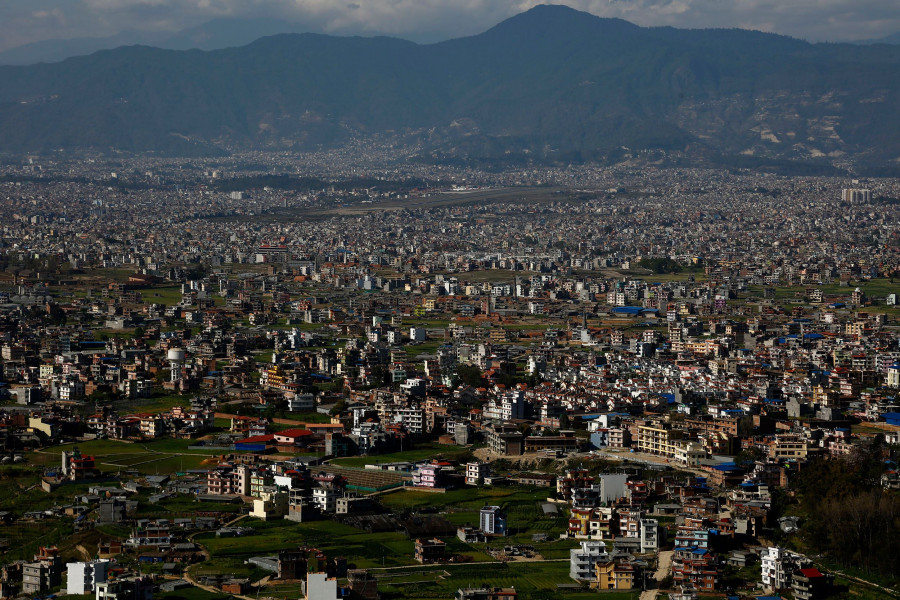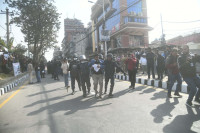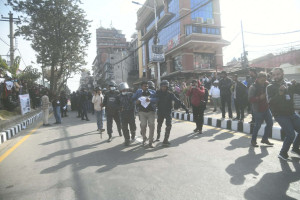Editorial
The Tibet warning
Given the millions of lives on the line, earthquake risk should be taken as a perpetual emergency.
On the morning of January 7, a magnitude 6.8 earthquake struck the remote Tingri County in southern Tibet, killing over 120 individuals and injuring countless more. Located just 80 km north of Mt Everest, the epicentre also sent tremors in Nepal and caused residents to flee their homes in fear. Even though no major damage was reported on this side of the border, the powerful jolt certainly reminded us of Nepal’s vulnerability to earthquakes by evoking the painful memories of 2015, when a fearsome temblor killed almost 9,000 people, and also the 2023 Jajarkot earthquake, which claimed more than 150 lives—plus many smaller ones in between.
Earthquakes in Nepal and the surrounding Himalayan region have long concerned seismologists and experts. Nepal lies in one of the world’s most active seismic zones—formed by the collision of the Indian and Eurasian tectonic plates. According to experts, Nepal’s Western region is particularly at risk, as it hasn’t seen a major earthquake for over 500 years. Since 2022, there have been more than 15 tremors in the Sudurpaschim province—including the recent big one in Bajura of a magnitude 5.2. This again invariably makes us fear the impending Big One. Both other areas of the country are no less at risk. In addition to geographical vulnerability are man-made risks. Concrete jungles, built by flouting the national building codes in high-density areas like the Kathmandu Valley, are mushrooming. Houses in far-flung areas of the country are also being built by ignoring the building codes.
Nepalis were caught unaware by the 2015 earthquake, and awareness programmes and construction of earthquake-resilient houses gained momentum in its immediate aftermath. But, predictably, complacency has crept in with the passage of time. Not only has reconstruction of earthquake-resilient houses slowed, even basic safety measures are being ignored. The authorities have failed to punish those who have bypassed the building rules. They have also fallen short of providing enough budget to rebuild and retrofit houses in quake-affected areas.
For instance, the federal government provides only Rs50,000 in two tranches to rebuild completely or partially damaged houses, but this is far from enough to build earthquake-resilient homes. As a result, many quake victims in Sudurpaschim Province and Karnali Province are still languishing in temporary shelters, while others are returning to their damaged houses. A recent report in this Post shows how people in Rukum West, out of frustration of delays in housing aid, are building shelters that don’t adhere to building codes. These are not signs of a responsible state that is worried about the safety of its citizens.
A centre of perpetual seismic activity, no amount of awareness or rescue operation training will be enough in Nepal. As vital is building robust infrastructure, strictly enforcing the building codes and expediting rehabilitation. Many urban centres in the country also lack public spaces for temporary settlements and shelters. Time has come to think of innovative ways to create new open spaces. Given the millions of lives that are at stake, earthquake-risk should be treated as a matter of perpetual emergency. The latest tremor in Tibet should be enough of a warning.




 10.12°C Kathmandu
10.12°C Kathmandu












%20(1).jpg&w=300&height=200)

